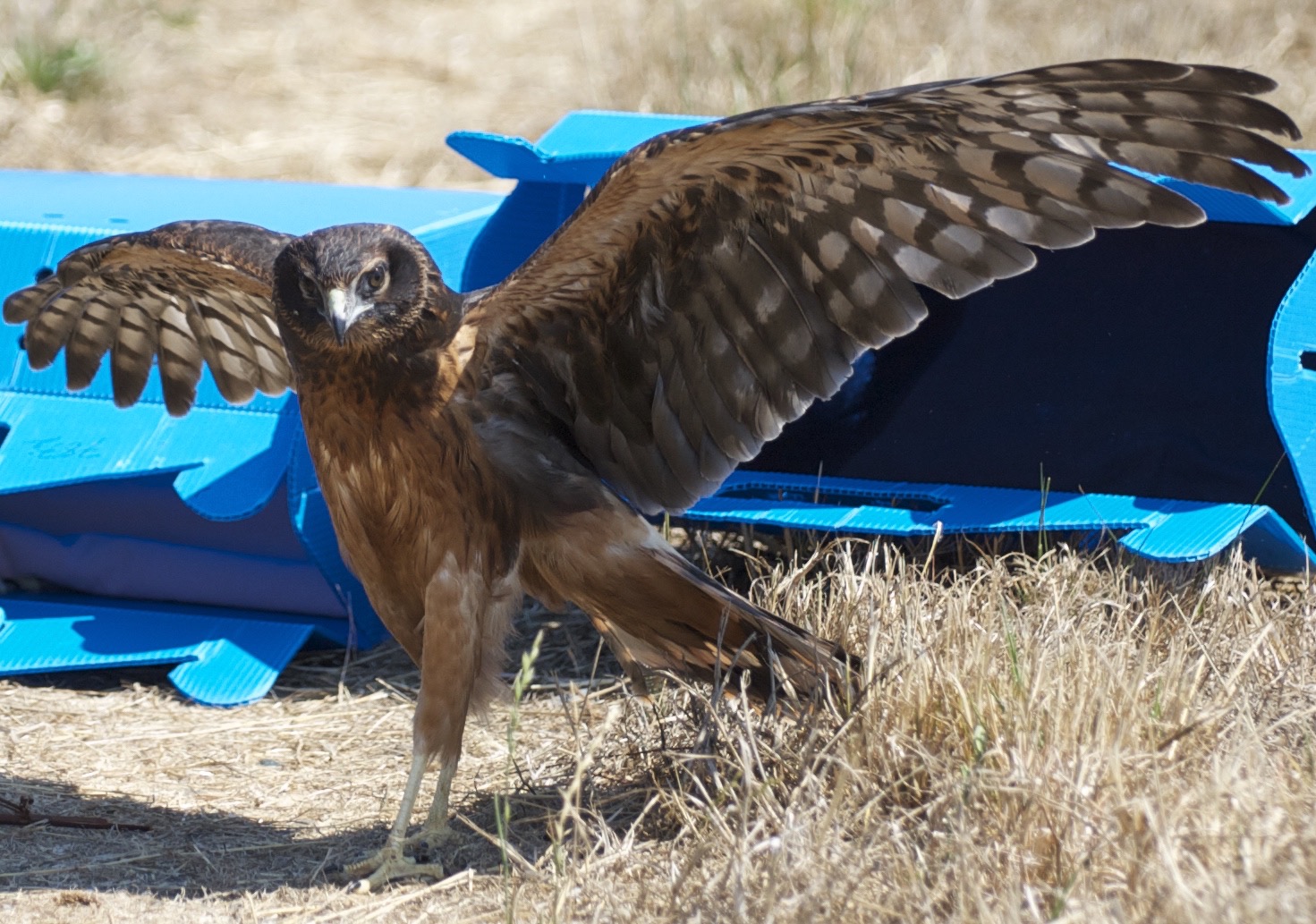
To a Marsh Hawk in Spring
There is health in thy gray wing,
Health of nature’s furnishing.
Say, thou modern-winged antique,
Was thy mistress ever sick?
In each heaving of thy wing
Thou dost health and leisure bring,
Thou dost waive disease and pain
And resume new life again.
Henry David Thoreau
In early July, two nestling raptors were brought to our clinic, Humboldt Wildlife Care Center, in Bayside. The story of how they were found at first seemed improbable – we were told their nest had been destroyed by a weed whacker near Fay Slough Wildlife Area, and also that another, a sibling, had been killed.
The two young birds of prey had been taken to the California Department of Fish and Wildlife office in Eureka. A Department employee brought them to us. You might wonder: how could you hit a hawk’s nest with a weed whacker? That’s the question we asked!
But these two birds were Marsh hawks, as Thoreau would have called them, or as we call them today, Northern Harriers (Circus cyaneus). Northern Harriers nest on the ground, in clumps of vegetation, such as grass and vines.
Marsh hawks are easily identified by their distinctive white feathers on their lower back, the disc of feathers that surround their faces, which help them hear the small mammals they hunt, and their low swooping flights over marsh, dune and field.
After four weeks in care, growing, learning to fly, and beginning to learn to hunt, these two birds were just released back at the Fay Slough Wildlife Area, where adult and juvenile Harriers were seen. These two joined them, perhaps even finding their parents, which would be terrific for them. It’s always nice to have some experienced adults around when you’re first making your way in the world.
 One of our patients, still in the aviary, the “owl-like” facial disc of feathers is a very distinctive feature of the Northern Harrier.
One of our patients, still in the aviary, the “owl-like” facial disc of feathers is a very distinctive feature of the Northern Harrier.
 In flight, the white band across the harrier’s loweer back is an easily seen mark that helps identify their species.
In flight, the white band across the harrier’s loweer back is an easily seen mark that helps identify their species.
 An older Harrier flies across the meadow, a couple hundred yards from the release site.
An older Harrier flies across the meadow, a couple hundred yards from the release site.
 A patient no more, this young Marsh hawk flies free!
A patient no more, this young Marsh hawk flies free!
 The last glimpse. Wild and free, again.
The last glimpse. Wild and free, again.
Each one of these birds ate 2-4 rats a day! That was close to 300 dollars just for the food to raise these two hawks. Your support makes our work possible. You can help us feed our predator patients by purchasing a gift certificate at our supplier, Layne Labs, or you can make a donation directly to Bird Ally X and Humboldt Wildlife Care Center using the donate button on this page.
Thank you for being a part of this life saving work!
All photographs Laura Corsiglia/Bird Ally X

